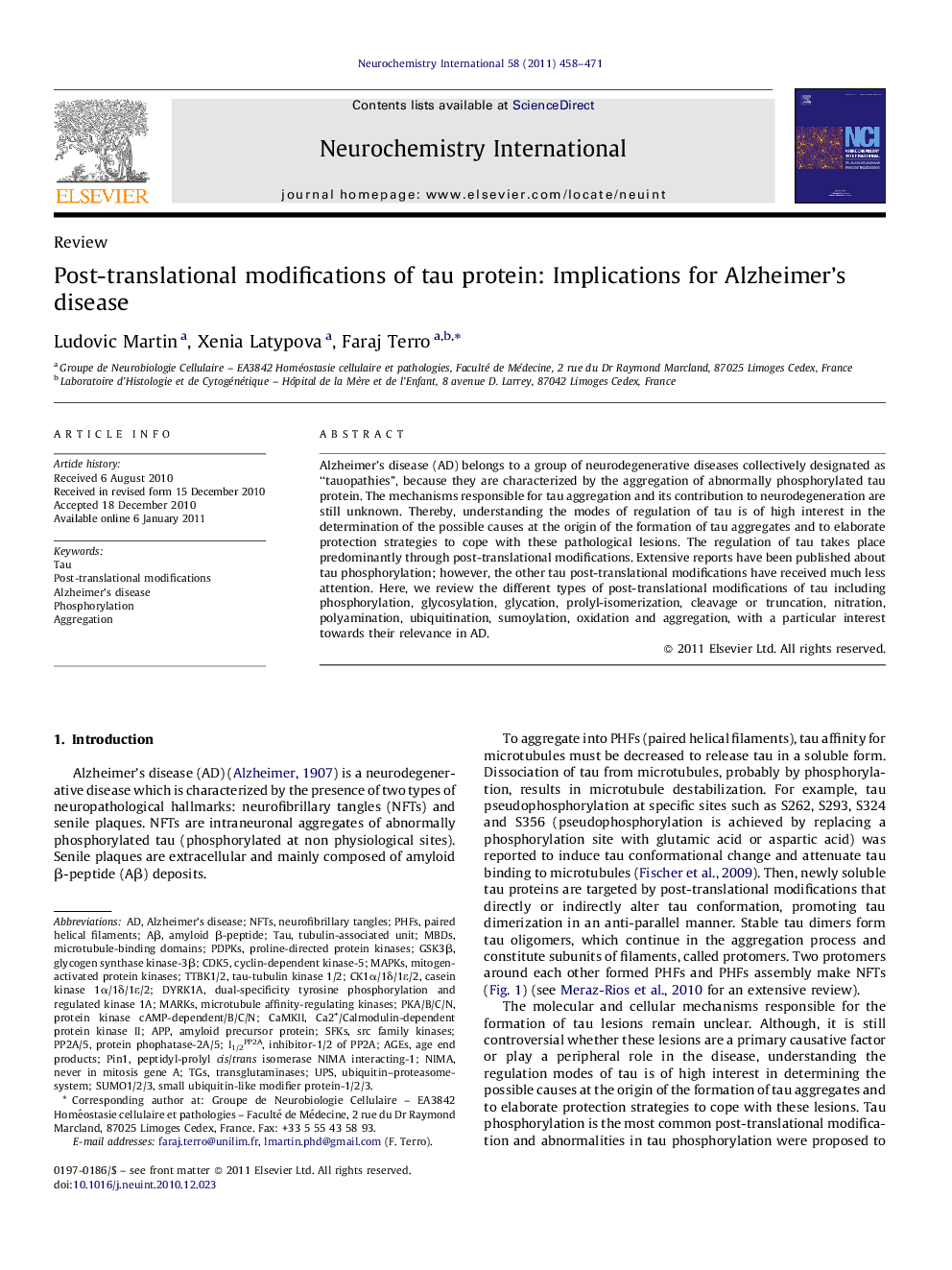| Article ID | Journal | Published Year | Pages | File Type |
|---|---|---|---|---|
| 2201265 | Neurochemistry International | 2011 | 14 Pages |
Alzheimer's disease (AD) belongs to a group of neurodegenerative diseases collectively designated as “tauopathies”, because they are characterized by the aggregation of abnormally phosphorylated tau protein. The mechanisms responsible for tau aggregation and its contribution to neurodegeneration are still unknown. Thereby, understanding the modes of regulation of tau is of high interest in the determination of the possible causes at the origin of the formation of tau aggregates and to elaborate protection strategies to cope with these pathological lesions. The regulation of tau takes place predominantly through post-translational modifications. Extensive reports have been published about tau phosphorylation; however, the other tau post-translational modifications have received much less attention. Here, we review the different types of post-translational modifications of tau including phosphorylation, glycosylation, glycation, prolyl-isomerization, cleavage or truncation, nitration, polyamination, ubiquitination, sumoylation, oxidation and aggregation, with a particular interest towards their relevance in AD.
Graphical abstractModel for interconnections between tau post-translational modification and regulation of NFT formation. Cellular mechanisms that impact tau aggregation into NFTs are subdivided into two categories: pro-aggregation and anti-aggregation mechanisms. This model integrates direct and indirect impacts of Aβ, GSK3β, PP2A, Pin1 and ubiquitin-proteasome system (UPS) on the formation of NFTs.Figure optionsDownload full-size imageDownload as PowerPoint slideResearch highlights▶ The causes of tau aggregation in Alzheimer's (AD) disease are still uncovered. ▶ Tau phosphorylation was suggested to play a central role in tau aggregation. ▶ However, tau phosphorylation alone is not sufficient to induce tau aggregation. ▶ Other tau post-translational modifications seem to be involved in tau aggregation. ▶ Here, we review all tau post-translational modifications and their relevance for AD.
